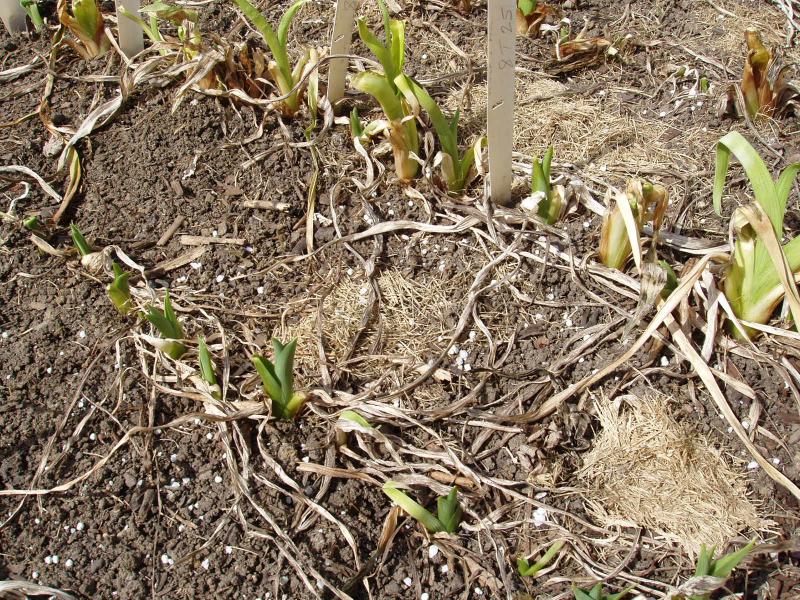Technical Tips
Treating Incoming Plants
With the spread of rust throughout the country, it is very important that you take the precaution of treating all incoming plants to your garden. If receiving them through the mail, burn or destroy all packing material and the box they came in. Then cut the plants back to several inches above the crown, peeling back and discarding the outer layer of leaves. Then prepare a solution of fungicide or Clorox water (one part Clorox to 9 parts water). Soak the plants in this solution for 30 minutes before planting. Longer isn't better when it comes to the soaking time. If you have a secluded place to plant new plants, keep them away from the rest of your garden for several months in case they would show rust. You will know rust when you see it, and a good test is to wipe a tissue against the suspected rust, and if it comes away with a rusty substance on the tissue, you have rust in your garden. Sometimes when removing outer leaves there will show a rusty looking spot on the inner leaves towards the base; this is not rust. If you do find rust, don't panic, as rust won't over-winter in Nebraska. Rust has shown up in plants six months after having been received, so keep a good watch month by month. This is not meant to be alarmist, just good caution. Rust is not the end of the world!
With the spread of rust throughout the country, it is very important that you take the precaution of treating all incoming plants to your garden. If receiving them through the mail, burn or destroy all packing material and the box they came in. Then cut the plants back to several inches above the crown, peeling back and discarding the outer layer of leaves. Then prepare a solution of fungicide or Clorox water (one part Clorox to 9 parts water). Soak the plants in this solution for 30 minutes before planting. Longer isn't better when it comes to the soaking time. If you have a secluded place to plant new plants, keep them away from the rest of your garden for several months in case they would show rust. You will know rust when you see it, and a good test is to wipe a tissue against the suspected rust, and if it comes away with a rusty substance on the tissue, you have rust in your garden. Sometimes when removing outer leaves there will show a rusty looking spot on the inner leaves towards the base; this is not rust. If you do find rust, don't panic, as rust won't over-winter in Nebraska. Rust has shown up in plants six months after having been received, so keep a good watch month by month. This is not meant to be alarmist, just good caution. Rust is not the end of the world!
The Wonderful World of Hybridizing
If you think you'd like to give pollen dabbing a try, but don't know where to begin - you might start with this article by NDS's very own Scott Keller: Daylily Hybridizing Tips & Tricks.
If you think you'd like to give pollen dabbing a try, but don't know where to begin - you might start with this article by NDS's very own Scott Keller: Daylily Hybridizing Tips & Tricks.



